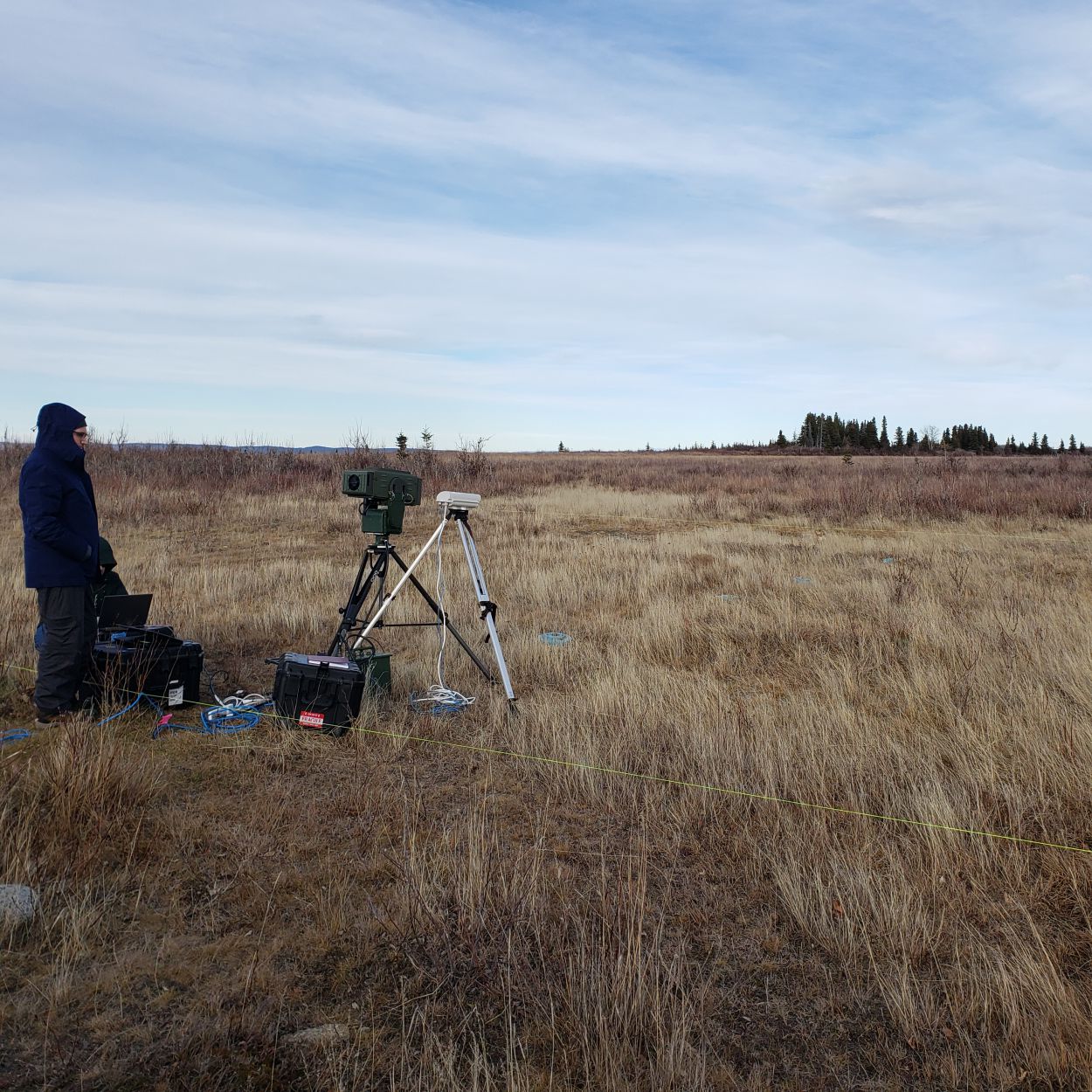// NEWS RELEASE
DEVCOM CBC Team Supports Data Collection Event in Alaska
CCDC Chemical Biological Center Public Affairs | May 10th, 2023
DEVCOM CBC Team Supports Data Collection Event in Alaska
DEVCOM CBC Public AffairsMay 10th, 2023

Erich Riedlmeier, Matt Thiess, and Chris Powell of MESH, Inc. are SBIR performers exercising software enabled dual-use long wave infrared security cameras known as "Dragonfly" to detect IED anomalies. (U.S. Army photo)
Aberdeen Proving Ground, MD – The U.S. Army Combat Capabilities Development Command Chemical Biological Center (DEVCOM CBC) participated in an Army-sponsored data collection event at the Cold Regions Test Center (CRTC) in Fort Greely, Alaska as part of its work for person borne improvised explosive devices (PBIED).
The event was produced and funded by the Army Counter Improvised Explosive Device Technical Working Group (CIED TWG), where DEVCOM CBC scientist, Dr. James Jensen, is the thrust area lead for PBIEDs. A team of researchers and scientists from the Center, including Jensen, spent a month in Alaska collaborating with the working group to help determine if PBIED imagers can enable additional detection capabilities for anti-maneuver, road-side threats in the same sensor footprint.
While experiments on PBIEDs have occurred in other locations, this was the first to be performed in Alaska, which came with a unique set of climate and terrain challenges. However, this research was particularly beneficial for the CIED TWG to determine how detection technologies would perform in environments where there would be snow-covered ground or obstructed areas.

As part of the CEID TWG, the PBIED thrust area has been working to research, develop, and prototype various sensors that will detect and image PBIED in unstructured and uncontrolled environments. The event at CRTC provided an opportunity to test these prototypes and collaborate with multiple partners, such as the U.S. Army Engineer School, U.S. Army Corps of Engineers, and other DEVCOM centers. DEVCOM CBC has played a vital role in this effort applying its decades of expertise in passive stand-off detection as well as making dual use of its current technology.
Janet Jensen, part of the DEVCOM CBC team that attended the data collection event stated, “Our goal is to enhance force protection while reducing the footprint, logistics, and cognitive burden for the warfighter. We want to make it easy for them to be warned of potential threats.”
The U.S. Army Combat Capabilities Development Command (DEVCOM) leads in the discovery, development and delivery of technology-based capabilities to enable Soldiers to win our nation’s wars and come home safely. DEVCOM is a major subordinate command of the U.S. Army Futures Command. The DEVCOM Chemical Biological Center is the Army’s principal research and development center for chemical and biological defense technology, engineering and field operations. The DEVCOM Chemical Biological Center is headquartered at Aberdeen Proving Ground, Maryland.
